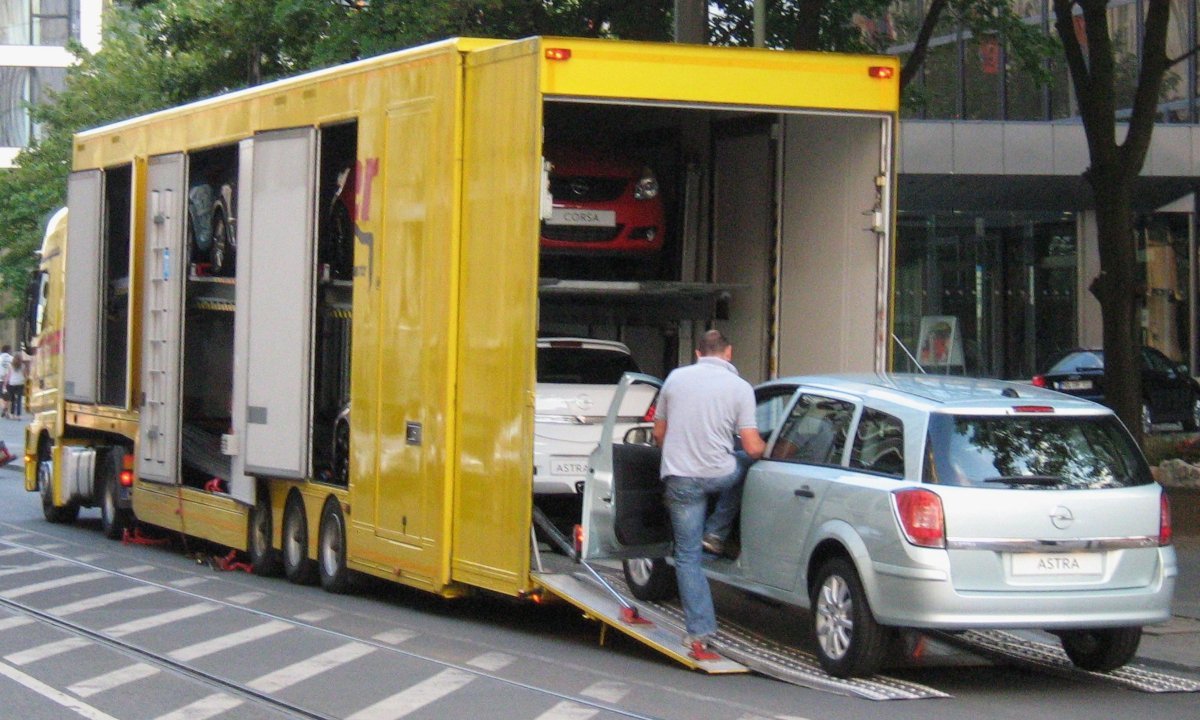Find out which method of car shipping is best for your needs.
So, a change in life circumstances requires that you move across the country. You need your car or motorcycle to come along but find it too inconvenient to drive it over such a long distance.
After doing some research, you decided that having your trusted vehicle shipped is the best course of action. But of all the variables you considered, one sticks out like a sore thumb: Open Transport or Enclosed Shipping?
How a vehicle is transported greatly affects the overall cost of shipping, and is a major deciding factor for anyone on a budget.
In this article, we look at the difference between open car shipping and enclosed auto transport, highlighting the pros and cons of each one so that you can make an informed decision for transporting your vehicle.
Choosing Open Car Shipping
With Open Transport, the shipping company transports your vehicle on an open carrier containing other vehicles.
Your car is exposed to the elements, but shippers must abide by effective regulations that help ensure it completes the journey without issue.
Pros of Open Transport
Cost is the number one reason why most people opt for open transport. Having more cars shipped on a carrier greatly reduces the transport cost per vehicle, allowing the shipping company to charge a lower price.
There are also more open-air carriers on the road, which makes it easier to book a preferred shipping and arrival time.
Cons of Open Transport
The open transport trailer is open-air, exposing your vehicle to the weather and road debris during transport. Not having a cover also means your car may arrive dirty.
Fortunately, most mainstream cars can withstand the elements and will not depreciate in value under such conditions. That’s not the case for collectible, exotic cars, or other high-dollar vehicles.
Types of Open Transport
There are three main types of open car shipping carriers:
Two-level, multi-car carrier: The most popular and least expensive choice.
Single-level, multi-car carrier: Often used for moving sports or luxury autos, or for expedited deliveries.
Dully truck towing a single-level trailer: Normally used for short-distance or local deliveries.
Tip: For added protection when using an two-level, open carrier, request a “top load” if possible. Your vehicle will be loaded on the upper deck, protecting it from low-flying road debris and potential leakage from vehicles that would normally be above.
Choosing Enclosed Car Shipping
With enclosed transport, your vehicle is shipped in a fully enclosed trailer, providing a higher degree of security and protection.
Owners who wish to ship a new car, an antique, a collectible, or any other expensive vehicle are often advised to go with enclosed transport.
Pros of Enclosed Transport
It is the safest way to transport a vehicle. Not only does having the car or motorcycle in a trailer protect it from the weather, but it also enables a higher level of vehicle security and protection.
Drivers of enclosed carriers tend to have more experience caring for high-end vehicles, and some companies even offer a white glove transport option that gives your vehicle the highest level of customer care during the transport process.
Cons of Enclosed Transport
Enclosed carriers are more expensive than the open-air alternative. The fact that fewer cars are moved at once means a higher per-vehicle cost.
Enclosed carriers are also heavier, making them less fuel-efficient and increasing fuel costs.
Types of Enclosed Car Transport
Soft-sided and hard-sided trailers are available with enclosed car shipping, as well as multi-car trailer, two-car trailer, and one-car trailer options.
Multi-car enclosed trailers can carry as many as seven cars and are usually the most inexpensive choice.
Understandably, two- and one-car trailers command a higher premium and are often used for expensive, antique, or rare vehicles.
Other Factors to Consider
In addition to the method of shipping, the final price for shipping your vehicle will also affected by your vehicle’s make and model, its condition (does it need to be carried onto the carrier?), the distance it’s being shipped, and the starting and arrival destinations.
Make sure to thoroughly factor in these variables before you choose a car shipping provider.
For some peace of mind, look into getting insurance coverage that covers any potential damage sustained by your car during the shipping process.



